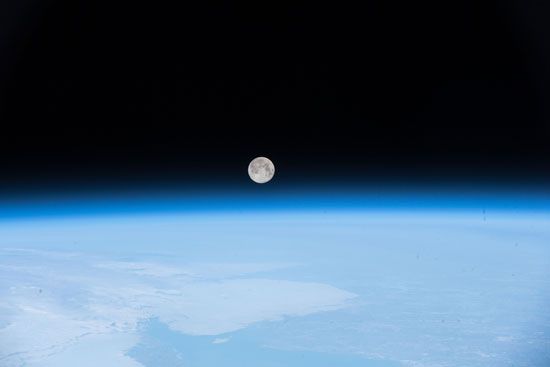
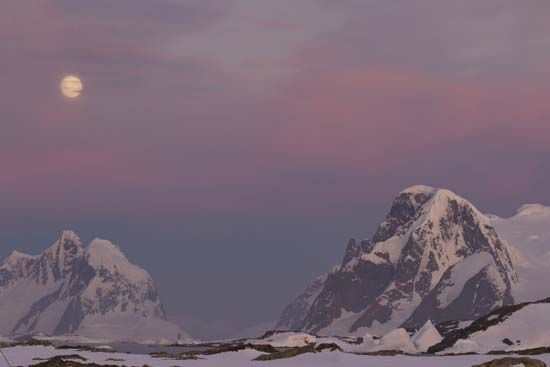 The Moon is a large natural object that orbits, or travels around, Earth. After the Sun it is the brightest object in the sky.
The Moon is a large natural object that orbits, or travels around, Earth. After the Sun it is the brightest object in the sky.
The average distance between the Moon and Earth is about 238,900 miles (384,400 kilometers). Compared to the distance between other planets and Earth, this distance is small. In fact, the Moon is close enough to affect the level of seas on Earth. Every day the seas seem to rise and fall. This is because of a force called gravity. The Moon’s gravity pulls on Earth. It is too weak to affect the whole planet, but it does make the water move. This creates tides.
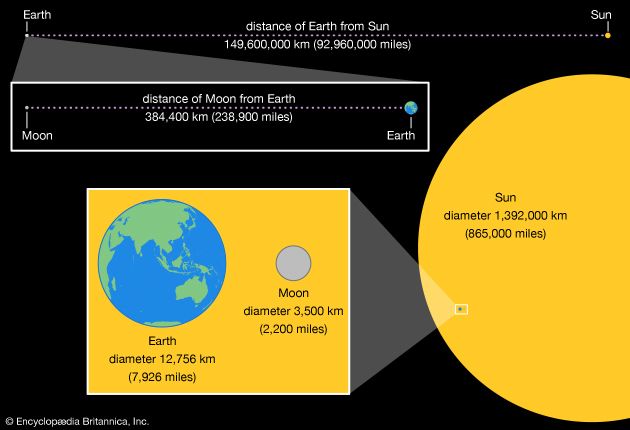 The Moon is slightly more than one quarter the size of Earth. Its diameter, or distance through its center, is about 2,200 miles (3,500 kilometers).
The Moon is slightly more than one quarter the size of Earth. Its diameter, or distance through its center, is about 2,200 miles (3,500 kilometers).
The 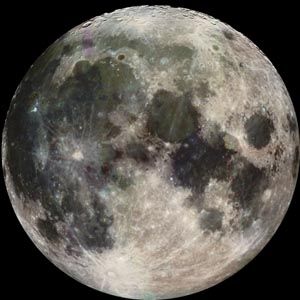 Moon is made mostly of rock. The surface has thousands of pits called craters. The craters form when chunks of rock and metal called meteorites crash into the Moon. These crashes have covered the Moon’s surface with rocks and dust. The Moon also has plains made of lava that erupted from volcanoes billions of years ago.
Moon is made mostly of rock. The surface has thousands of pits called craters. The craters form when chunks of rock and metal called meteorites crash into the Moon. These crashes have covered the Moon’s surface with rocks and dust. The Moon also has plains made of lava that erupted from volcanoes billions of years ago.
During the daytime, when the Moon faces the Sun, its surface temperature averages about 225° F (107° C). However, at night the temperature drops to about −243° F (−153° C).
Like the planets, the Moon has two types of movement: orbit and spin. The Moon orbits, or travels around, Earth. It takes the Moon about 27 days to make one trip around Earth. The Moon also spins about its center. It completes one rotation in about 27 days—the same time it takes to complete one orbit. For this reason, the same side of the Moon always faces Earth.
When 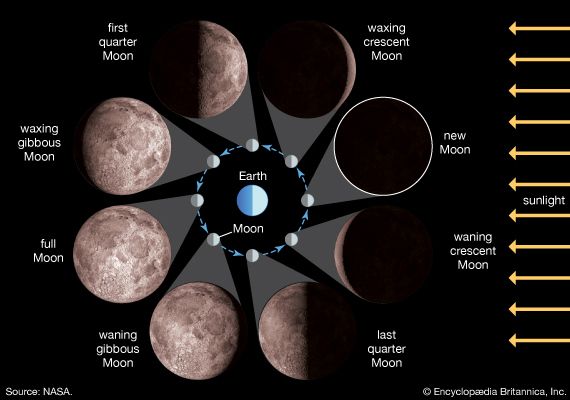 viewed from Earth, the Moon looks different at different times. These varying appearances are called phases. Sometimes the Moon looks like a full circle. At other times it appears as only a thin slice or looks completely dark. However, the Moon’s shape does not change—it just looks that way from Earth. The Moon reflects light from the Sun. As the Moon orbits Earth, the Sun shines on different parts of the Moon. This causes different parts to be visible from Earth.
viewed from Earth, the Moon looks different at different times. These varying appearances are called phases. Sometimes the Moon looks like a full circle. At other times it appears as only a thin slice or looks completely dark. However, the Moon’s shape does not change—it just looks that way from Earth. The Moon reflects light from the Sun. As the Moon orbits Earth, the Sun shines on different parts of the Moon. This causes different parts to be visible from Earth.
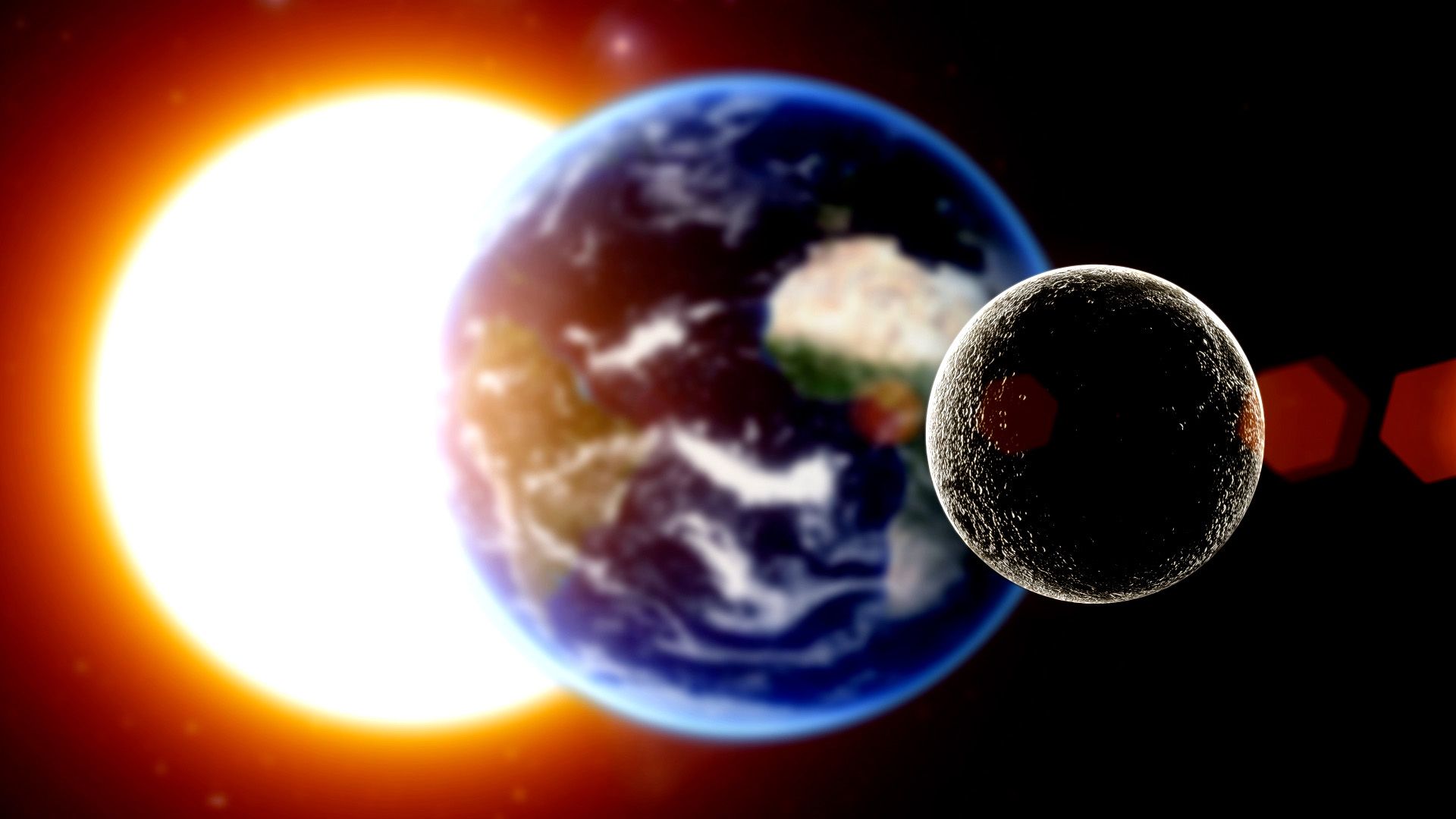 Sometimes the way the Moon, the Sun, and Earth are positioned causes an event called an eclipse. During an eclipse of the Sun, the Moon blocks the view of the Sun for a short time. During an eclipse of the Moon, Earth prevents the Sun from shining on the Moon.
Sometimes the way the Moon, the Sun, and Earth are positioned causes an event called an eclipse. During an eclipse of the Sun, the Moon blocks the view of the Sun for a short time. During an eclipse of the Moon, Earth prevents the Sun from shining on the Moon.
People have observed the Moon since ancient times. In the 1600s the invention of the telescope allowed people to study the Moon more closely.
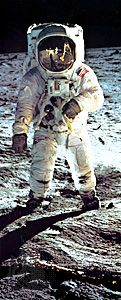
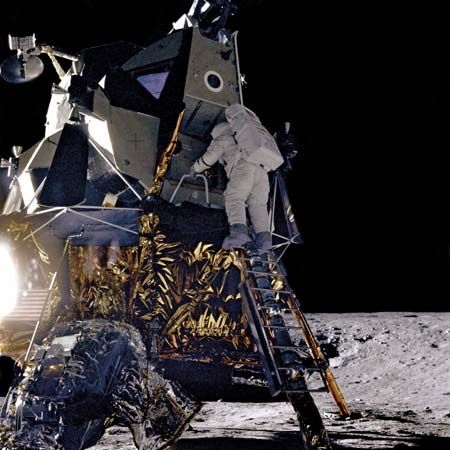
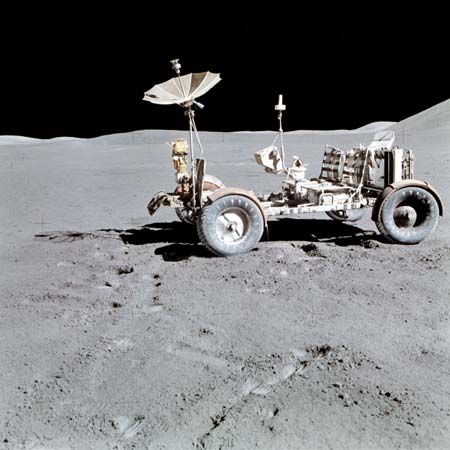 Even greater advances in knowledge have come from the many spacecraft sent to the Moon since 1959. In 1966 Luna 9, a spacecraft from the Soviet Union, became the first craft to successfully land on the Moon. It did not have any crew. In 1969 the U.S. Apollo 11 craft carried the first people—Neil Armstrong and Edwin (Buzz) Aldrin, Jr.—to walk on the Moon. Ten other astronauts have walked on the Moon since then.
Even greater advances in knowledge have come from the many spacecraft sent to the Moon since 1959. In 1966 Luna 9, a spacecraft from the Soviet Union, became the first craft to successfully land on the Moon. It did not have any crew. In 1969 the U.S. Apollo 11 craft carried the first people—Neil Armstrong and Edwin (Buzz) Aldrin, Jr.—to walk on the Moon. Ten other astronauts have walked on the Moon since then.




